The Silent Symphony: Engineering Workflow Harmony Through Precision Caster Design
In the relentless cadence of modern industry, where microseconds translate to margins and ergonomic missteps cascade into costly downtime, the true architects of efficiency often operate unseen. As manufacturers, we don’t merely supply caster; we orchestrate the silent symphony of movement. Every roll, swivel, and brake application is a note in the composition of your operational workflow. Optimal Caster isn’t just a component; it’s the engineered foundation for unlocking latent potential, transforming cumbersome processes into fluid, productive, and inherently safer operations. The choice transcends hardware; it’s a strategic investment in the very rhythm of your enterprise.
Imagine a sprawling automotive assembly line, where specialized tool carts glide effortlessly between stations, precisely positioned by technicians without a wasted step or strained muscle. Envision a bustling hospital ward, where critical equipment moves silently and securely over varied flooring, responding instantly to caregiver needs without jarring disruption. Picture a high-tech cleanroom, where sensitive instrumentation traverses flawlessly, leaving no particulate trace. This isn’t fantasy; it’s the tangible reality engineered into every Optimal Caster – the culmination of precision design meeting profound understanding of kinetic challenges.
The Kinetic Imperative: Beyond Rolling, Towards Revolutionizing
The common perception of the caster is reductive: a simple wheel assembly. We challenge this. An Optimal Caster is a sophisticated kinetic interface, a meticulously designed system mediating between load, operator, environment, and task. Its impact resonates far beyond mere mobility.
1. Ergonomic Amplification & The Human Dividend:
* The Science of Reduced Effort: Optimal Casters are engineered with advanced bearing systems (precision ball, roller, or specialized sealed designs) and wheel compounds calibrated for ultra-low rolling resistance. This translates directly into a measurable reduction in initial and sustained push/pull forces – often by 30-50% or more compared to generic alternatives. The physiological impact is profound: reduced operator fatigue, minimized risk of musculoskeletal disorders (MSDs), and sustained energy levels throughout shifts.
* Stability as Safety: True stability isn’t just about not tipping. It’s about predictable, vibration-damped movement. Our designs incorporate optimized wheel-to-swivel section geometry, precision-machined kingpins, and advanced load distribution systems. This ensures smooth traversal over uneven surfaces (grating, thresholds, minor debris) without jarring shifts or uncontrolled oscillations, protecting both the load and the operator from sudden, hazardous movements. Ergonomics isn’t a buzzword; it’s physics engineered for human well-being.
2. Productivity Unleashed: The Velocity of Reliability:
* Downtime Annihilation: Unplanned stoppages are the nemesis of throughput. Optimal Casters are built for endurance. Robust construction using high-grade alloys, forged components, and wear-resistant materials (polyurethane, specialized nylons, phenolic composites) withstand punishing environments – impacts, chemical exposure, extreme temperatures, continuous high-cycle use. Integrated sealing technologies shield critical bearings from contaminants (dust, grit, liquids), drastically extending service life and eliminating a primary failure point. Reduced maintenance intervals and near-elimination of catastrophic failure translate directly to uninterrupted workflow.
* Precision Maneuverability as Process Acceleration: Tight aisles, complex layouts, and precise positioning requirements demand more than just “movement.” Optimal Swivel Casters feature precision swivel sections with optimized bearing races and low-friction seals, enabling effortless, controlled rotation even under heavy loads. Combined with perfectly matched wheel diameters and tread designs, this allows operators to navigate intricate paths with minimal effort and maximal accuracy, shaving critical seconds off material handling tasks and accelerating overall process velocity. Think surgical instrument positioning, not just cart hauling.
3. Environmental Mastery & Surface Preservation:
* Conquering the Terrain: No two floors are identical. Optimal Caster solutions are meticulously tailored. Need near-silent operation in a library or hospital? Elect specially formulated soft-tread elastomers. Operating on sensitive epoxy floors or pristine marble? Non-marking, non-staining compounds are essential. Navigating corrosive chemical washdown areas in food processing? Stainless steel constructions with sealed, corrosion-resistant bearings are non-negotiable. Traversing rugged outdoor yards or debris-laden construction sites? Large diameter, high-impact resistant wheels with aggressive tread patterns conquer the challenge.
* Protecting Your Capital Investment: Floors represent a massive capital asset. Inferior casters cause costly damage – scuffing, gouging, and embedding debris. Optimal Casters utilize tread compounds engineered for floor-friendliness and wheel designs that shed debris rather than trap it. Precision alignment and stability features prevent wheel scrubbing and dragging, further minimizing wear. Protecting your floor isn’t incidental; it’s engineered into our design philosophy.
4. Intelligent Integration: The Dawn of Smart Kinetic Systems:
* Beyond Mechanics: The future of material handling is connected. Optimal Caster is pioneering intelligent integration. Imagine casters with embedded load sensors providing real-time weight data to warehouse management systems. Envision units with RFID tags for automated asset tracking. Consider integrated condition monitoring sensors (vibration, temperature, bearing wear) transmitting predictive maintenance alerts, preventing failures before they occur. Swivel locks activated automatically via geofencing or proximity sensors. This isn’t science fiction; it’s the next evolution of the kinetic interface, transforming casters from passive components into active data nodes optimizing workflow intelligence.
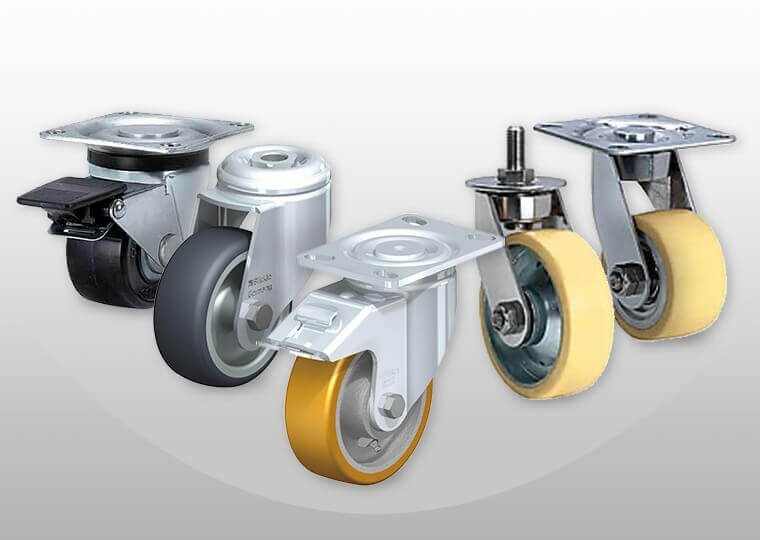
The Selection Crucible: Engineering Your Optimal Solution
Selecting the right Optimal Caster isn’t a checkbox exercise; it’s a critical engineering specification process. Here’s the deep dive:
1. Load Dynamics: Beyond Static Weight:
* Dynamic vs. Static: The static load capacity is merely the starting point. Dynamic loads during movement, especially over uneven surfaces or during starts/stops, impose significantly higher stresses. Shock loading from impacts must be factored. We engineer for a substantial safety margin beyond your nominal weight requirement.
* Load Distribution & Configuration: Is the load evenly distributed? Does the equipment have a high center of gravity? A four-caster configuration distributes load differently than a five or six-wheel setup. We calculate the actual load per caster under worst-case dynamic conditions, not just total weight divided by four. Stability calculations are integral to this phase.
* Specialized Needs: Ultra-heavy loads (10+ tons) demand specialized forged designs and potentially custom wheel configurations. Uneven load distribution might necessitate different caster types (swivel vs. rigid) or capacities on the same piece of equipment.
2. Maneuverability Matrix: Swivel vs. Rigid – A Tactical Choice:
* Swivel Precision Engineering: Not all swivels are equal. Precision-ground kingpins riding on hardened bearing races ensure smooth, low-effort rotation without “stick-slip” phenomena. Sealing is paramount to prevent contamination ingress that increases friction and wear. We offer variations: standard swivel, precision low-profile swivel (for minimal height), and even lockable swivel options combining maneuverability with fixed positioning.
* Rigid for Predictability: Where straight-line tracking is paramount (long aisles, conveyor lines), rigid casters eliminate the slight “crabbing” inherent in swivels, reducing operator steering effort and wheel scrub. Precision alignment during mounting is critical for optimal rigid caster performance.
* Hybrid Solutions: Often, the optimal setup combines swivel and rigid casters (e.g., two swivels for steering, two rigids for tracking). We model the turning characteristics based on your equipment dimensions and aisle widths to recommend the perfect blend.
3. Wheel Technology: The Science of the Interface:
* Material Alchemy: Each compound offers distinct advantages:
* High-Performance Polyurethanes (TPU, PU): Unmatched balance: excellent wear resistance, high load capacity, extremely low rolling resistance, good chemical resistance (varies by formulation), quiet operation, non-marking. Ideal for most indoor industrial/commercial applications. Specific formulations target extreme temperatures, static dissipation (ESD), or enhanced oil resistance.
* Phenolic (Thermoset Resin): Exceptional heat resistance (up to 350°F+), very high load capacity, chemical resistant to many solvents and oils. Excellent for foundries, ovens, chemical plants. Can be noisy on hard floors.
* Nylon & Polyamides: High impact strength, good chemical resistance (especially to hydrocarbons), good abrasion resistance. Often used in heavier industrial settings. Can mark some soft floors if debris is embedded.
* Elastomers (Rubber, Neoprene, Nitrile): Excellent vibration damping, quiet operation, good traction. Used for lighter loads or noise-sensitive environments. Susceptible to oils/solvents and wear faster than PU/phenolic.
* Metal (Cast Iron, Forged Steel, Stainless): Ultimate durability and heat resistance for extreme heavy-duty, high-temperature, or corrosive environments (stainless). High noise and potential floor damage require careful consideration.
* Diameter & Tread: The Efficiency Lever:
* Diameter: Larger diameters dramatically reduce rolling resistance, especially over obstacles, cracks, or debris. They require less force to initiate and maintain movement. Trade-off is increased equipment height.
* Tread Profile: Flat treads maximize surface contact for heavy loads on smooth surfaces. Slightly crowned treads reduce friction for easier turning. Grooved or patterned treads enhance traction on uneven or slippery surfaces. Non-marking formulations are critical for sensitive floors.
* Core Construction: Wheel cores can be plastic, aluminum, or steel. Core strength is vital for heavy loads, preventing deflection that increases rolling resistance and accelerates bearing wear.
4. Bearing Systems: The Heart of Longevity & Effort Reduction:
* Plain Bore (No Bearing): Suitable only for very light-duty, low-cycle applications. Avoid for anything demanding.
* Roller Bearings (Needle/Spherical): Handle extremely high radial loads in a compact space. Excellent for heavy industrial applications. Require robust sealing.
* Precision Ball Bearings: Provide the lowest rolling resistance and smoothest operation for medium to heavy loads. Sealed and pre-lubricated versions offer long life with minimal maintenance.
* Double Row Ball Bearings: Offer higher load capacity and rigidity than single row, ideal for demanding applications.
* Specialized Seals: Critical for excluding contaminants (IP ratings relevant). Labyrinth seals, triple-lip contact seals, and specialized grease purges are employed based on the environment (dusty, wet, corrosive).
5. Braking & Control: Safety Engineered:
* Total Lock Brakes: Simultaneously lock wheel rotation and swivel movement. The gold standard for maximum stability on inclines or when absolute immobility is required (e.g., medical equipment, delicate instrumentation).
* Directional Lock Brakes: Lock the wheel rotation only, allowing the caster to swivel. Useful for parking on level surfaces where repositioning might be needed.
* Swivel Lock Brakes: Lock only the swivel function, turning the swivel caster into a rigid one. Useful for maintaining straight-line travel.
* Side Brake Levers: Offer easier access and application, especially on lower-profile equipment.
* Brake Material: Brake pads must be durable and provide positive engagement. Materials are chosen for longevity and effectiveness on specific wheel types.
6. Top Plate & Mounting: The Structural Link:
* Material & Gauge: Steel (various grades), stainless steel, or forged steel. Thickness and reinforcement are dictated by load and shock requirements.
* Configuration: Standard top plate, grip neck channel (for easy insertion into tubular legs), threaded stem, expanding adapter, or custom weld-on plates. Secure, vibration-resistant mounting is critical for stability and longevity.
* Fasteners: High-grade bolts, nuts, and washers are essential. Locking features (nylock nuts, thread locker) prevent loosening due to vibration.
7. Environmental & Regulatory Compliance:
* Temperature Ranges: Specified operating minimums and maximums for both wheel material and bearings/grease.
* Chemical Resistance: Compatibility charts for wheels and hardware against specific chemicals encountered.
* Cleanability & Sanitation: Stainless steel constructions, smooth surfaces, sealed bearings, and cleanable wheel compounds for food, pharmaceutical, and medical applications (meeting FDA, USDA, HACCP standards).
* Static Dissipation (ESD): Essential for electronics manufacturing, preventing damage from static discharge. Requires conductive wheels and a path to ground.
* Noise Emissions: Critical for libraries, hospitals, offices. Achieved through specialized wheel compounds and precision bearing systems.
* Fire Ratings: Certain materials meet specific flammability standards.
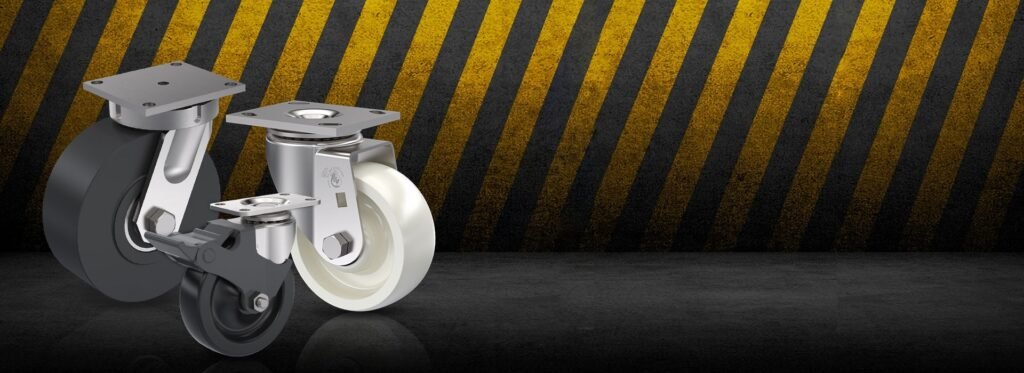
8. Total Cost of Ownership (TCO): The Strategic View:
The cheapest caster is often the most expensive. Optimal Caster prioritizes TCO:
* Longevity: Reduced replacement frequency.
* Reduced Maintenance: Sealed bearings, robust construction minimize downtime for repairs.
* Labor Savings: Lower push/pull forces reduce fatigue and potential injury costs.
* Productivity Gains: Smoother, faster movement increases throughput.
* Asset Protection: Prevents damage to floors and transported goods.
* Safety: Mitigates accident risks and associated costs.
The Optimal Imperative: Partnering for Kinetic Excellence
As a manufacturer deeply invested in the science of movement, we understand that specifying Optimal Casters is not a commodity purchase. It’s a strategic engineering decision impacting safety, efficiency, productivity, and your bottom line. We move beyond catalog selling to become your kinetic consultants.
Our Commitment:
- Deep-Dive Consultation: We don’t just ask for load and size. We engage in a detailed analysis of your application, environment, challenges, and goals. We ask about floor surfaces, aisle widths, cycle rates, cleaning protocols, noise constraints, and safety regulations.
- Application-Specific Engineering: Leveraging our extensive material science expertise and manufacturing capabilities, we tailor solutions. From compound formulations to bearing selections and brake configurations, we engineer casters optimized for your specific reality.
- Prototyping & Testing: For critical or novel applications, we offer prototyping and rigorous in-lab and in-field testing to validate performance before full-scale deployment.
- Lifecycle Support: Our partnership extends beyond delivery. We provide installation guidance, maintenance recommendations, and responsive technical support throughout the product lifecycle.
- Continuous Innovation: We invest relentlessly in R&D – exploring new materials, smarter integration (IoT), enhanced bearing technologies, and more sustainable manufacturing processes – ensuring Optimal Caster remains synonymous with kinetic leadership.
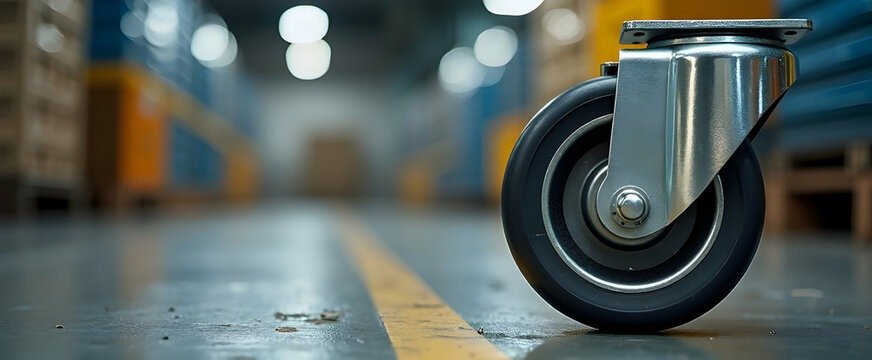
The Symphony Awaits
Don’t let inefficient movement be the hidden friction slowing your progress. Don’t accept operator strain or preventable downtime as the cost of doing business. Embrace the silent symphony of optimized workflow. Partner with Goodich. Let us engineer the precise kinetic interface that transforms the way you move, the way you work, and the results you achieve.
The Symphony Awaits:
Don’t let inefficient movement be the hidden friction slowing your progress. Don’t accept operator strain or preventable downtime as the cost of doing business. Embrace the silent symphony of optimized workflow. Partner with Optimal Caster. Let us engineer the precise kinetic interface that transforms the way you move, the way you work, and the results you achieve.
Contact Optimal Caster today for a comprehensive workflow kinetic assessment. Let’s engineer your advantage, one revolution at a time.




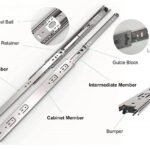
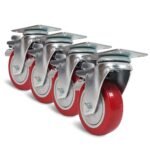
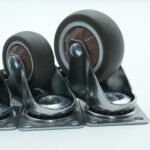
Leave a Reply